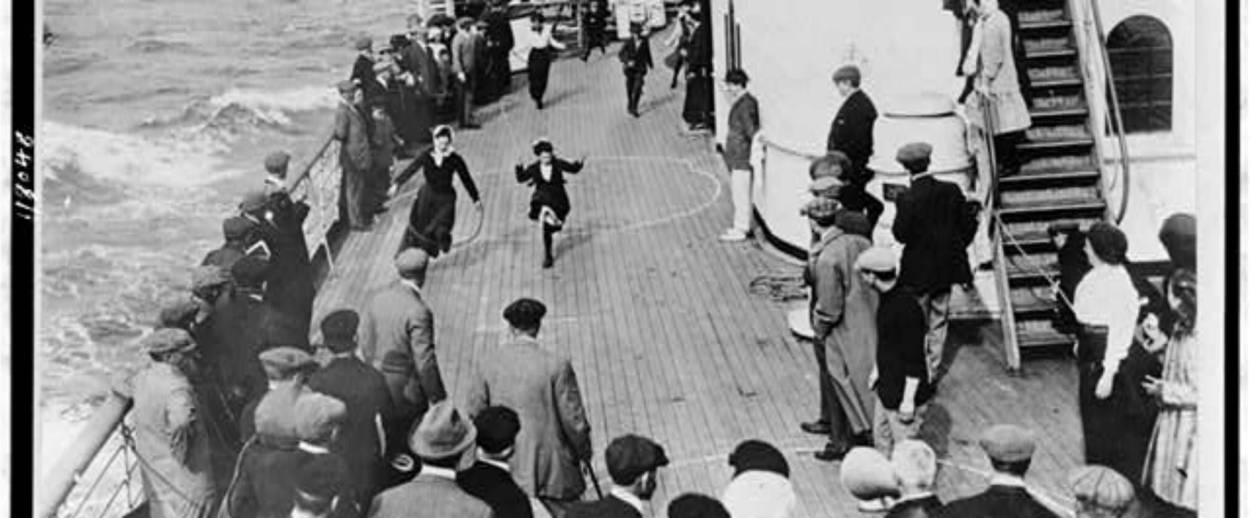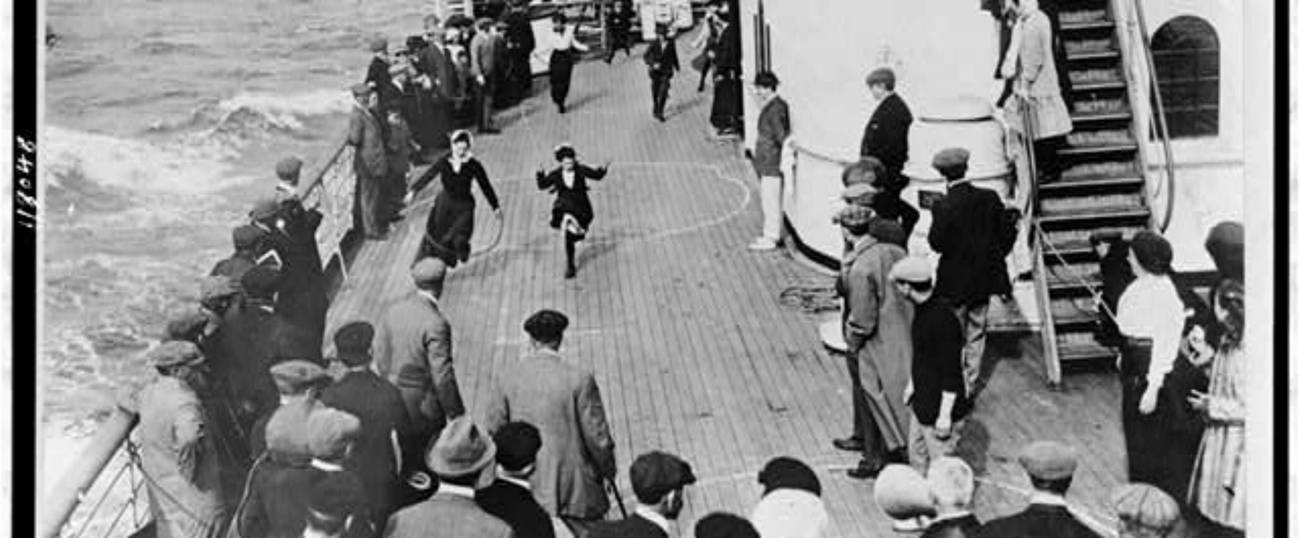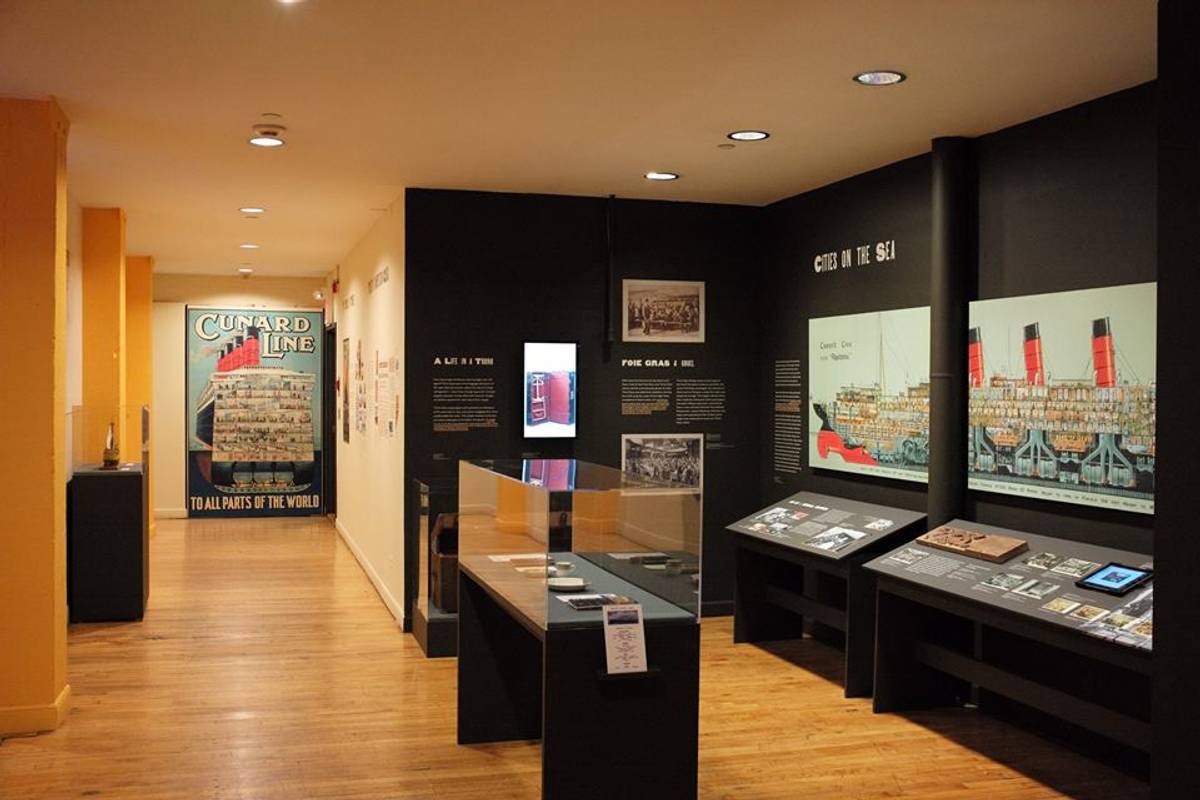Gruel and Foie Gras: Voyages on the High Seas Into New York Harbor, 1900-1914
A new exhibit at the South Street Seaport Museum depicts ‘migrants and millionaires aboard the great liners’ at the turn of the century




“Millions: Migrants and Millionaires Aboard the Great Liners,” a new exhibit at the South Street Seaport Museum, compares the journeys of immigrants and millionaires cruising into New York Harbor at the turn of the century. It’s a smart idea for a show—the timing, of course, could not be more apt, given the swelling national discussion around immigration—and it offers a glimpse into the real lives of Titanic’s Jack and Rose… who in real life, of course, would never have met. The exhibit spotlights just how separate the lives of Third Class and First Class passengers really were.
Nearly 13 million immigrants traveling in Third Class came into the United States between 1900 and 1914, the show notes. At the same time, around 150,000 of America’s one-percenters went to Europe and back in First Class; they spent over $11.5 billion (in 2017 dollars) on their Grand Tours. “A journey of two different classes, two different worlds, but a journey made together on the great ocean liners of the North Atlantic,” the text poetically notes. New York was the epicenter of it all. Seventy-five percent of immigrants and 86 percent of American First-Class trans-Atlantic travelers traveled via the Port of New York.

The small show, which opens today and runs through Jan. 7, 2018, spotlights artifacts from the South Street Seaport Museum’s permanent collection, including dishware from the first and third classes and a model of the lightship Ambrose, the “floating lighthouse” still moored in the harbor (admission to the real thing is included with your museum ticket). The Ambrose once guided the great ships from the Atlantic through the shoals of lower New York Bay. “Her light was the first thing an immigrant would see as they entered New York Harbor, long before the buildings and piers on the waterfront, long before the Manhattan skyline, and long before the lighted torch of the Statue of Liberty,” the wall text, by curator William Roka, says. You’ll also see a sad, battered wooden trunk that once belonged to an Italian immigrant; it’s contrasted with a video showing the fanciness of a First-Class traveler’s luggage. There are iPads offering up more images, including one that lets you scroll through the many somber faces of immigrants on the great ships. (“Each face has a story.”)
The strength of the show is in the informative wall descriptions and the stylish recreations of menus, travel posters, and other ephemera. (The museum has its own letterpress and historic print shop, incorporating many vintage wooden and metal types. Font nerds will have a field day.) Looking at the steamship companies’ marketing materials shows how differently they approached rich and poor travelers: The former got gorgeously designed posters and brochures listing gazillions of onboard amenities; the latter got simple printed broadsides that listed only the sailing dates.
Study the cross-section of the Cunard Line’s Aquitania and see how little space the Third-Class passengers (crammed below decks, just above the boilers) got compared to First Class. The latter took up two-thirds of the ship’s space, with fancy suites, multiple dining areas, a ladies’ sitting room, a “writing room,” a library, various lounges and smoking rooms. (Some ships had greenhouses—one mustn’t be without fresh flowers every day—ballrooms, department stores, Turkish baths, swimming pools and tennis courts, too.) A master woodcarver, Deborah Mills, is in residence every Wednesday at the museum’s Maritime Craft Center a couple of blocks away; you can watch her recreate—using the same tools and techniques used at the turn of the century—a piece of trim that once adorned the RMS Mauretania’s smoking room. On the days she’s not carving, the unfinished piece is in the museum, where you are allowed to fondle it.
It’s fun to compare the menus in the Mauretania’s First and Third Classes. The First-Class menu is on fine, nearly pulp-free paper, with elegant rounded corners; it’s printed in three different colors. The offerings ape schmancy European cuisine, and sound disgusting by today’s standards: “Bloater toast” (Googling reveals that a bloater is a kind of herring), consommé crecy, parsnips a la crème, pate de foie gras en truffe, college pudding (again, Google helps: “a traditional pudding served to students in the halls of Oxford and Cambridge”). Some ships’ restaurants were operated by the Ritz-Carlton Hotel; a single meal could cost as much as a Third-Class ticket. Meanwhile, the simpler, less sauce-drenched Third-Class menu, printed on pulpier paper in only one color ink, is more in line with how we eat today: Beefsteak, bread and butter, corned beef and cabbage, smoked herring and jacket potatoes, sweet peaches and rice.
Of course, in the years after World War I, the United States passed legislation restricting immigration by four-fifths and favoring immigrants from Northern Europe. We all know what happened to the European Jews of that era. And the parallels to today—not only in terms of immigration debates but also in the differences between the way rich and poor live—are hard to ignore.
Curator Roka offers a quotation from Edward Alfred Steiner’s On the Trail of the Immigrant:
America is not the land of mighty dollars, but the land of great ideals.
I am not yet convinced that the peril to these ideals lies in those who come to you, crude and unfinished; if I were, I would be the first one to call out: “Shut the gates,” and not the last one to exile myself for your country’s good.
I think that the peril lies more in the first cabin than in the steerage…
Related: To Huntington Station
Marjorie Ingall is a former columnist for Tablet, the author of Mamaleh Knows Best, and a frequent contributor to the New York Times Book Review.